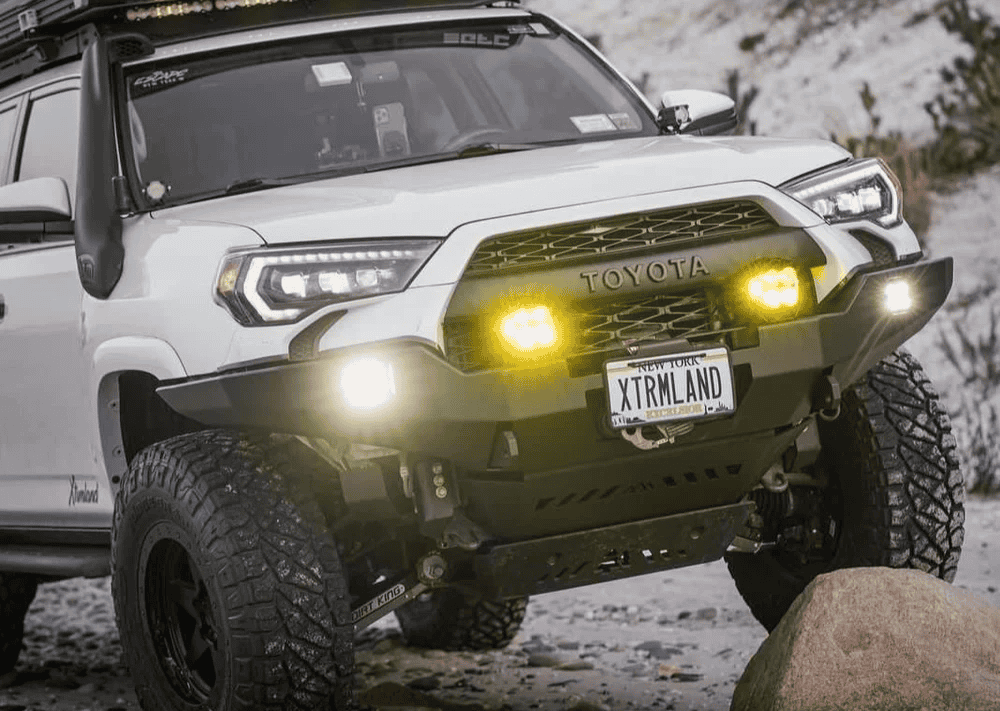Overland Vehicles

Keeping a compact cabin livable in summer is mostly a heat management problem. Start with the cabin size, insulation quality, solar exposure, and how many bodies and appliances add heat. That defines your cooling target, then you choose a unit and power plan that can meet it for the hours you need.
Rooftop self contained systems are common because they free up interior space and exhaust heat outside. They are simple to service and move air efficiently, which helps in humid climates. Split systems move the compressor to a different location and can lower roof profile, though they add line routing and charge management. Portable units can work in a pinch but often struggle with venting losses and condensation.
DC systems sip power directly from batteries and skip inverter losses. Many draw 30 to 70 amps at 12 volts depending on compressor speed and ambient heat. AC units run through an inverter, and total draw depends on efficiency and duty cycle. Soft start modules help tame surge current so inverters and generators are not overloaded at startup. Whatever you choose, size for the worst afternoon you plan to camp, not a cool morning in the shade.
Most overland cabins land between 350 and 600 cubic feet. With good insulation and window covers, many vans and campers are comfortable with 6000 to 12000 BTU. Smaller shells or pop tops can get by with the lower end, while large high roof vans in strong sun may need the top of that range. People and pets add heat, so add capacity if you often travel with a full crew. The goal is not just hitting a number, it is keeping a stable cabin with a sane duty cycle, often 40 to 70 percent on a hot afternoon.
Air needs a clear path in and out of the evaporator and condenser. Keep intake grilles free, avoid tight ducts that choke flow, and use shrouds that prevent recirculating hot exhaust air. Seal penetrations to stop water ingress. In dusty regions, service filters often. Noise can be reduced with isolation mounts and lined duct runs, but do not block airflow to chase silence.
Air conditioning is an energy budget decision as much as a hardware choice. Begin with average draw, not the peak. A compact DC unit might average 400 to 800 watts while holding temperature in the shade, more in full sun. An efficient AC unit through an inverter can land in a similar range once cycling stabilizes. Multiply that average by the hours you expect to cool, then add 15 to 25 percent for inverter and wiring losses.
Lithium batteries excel here because they handle sustained loads and recharge quickly. A 3000 to 4000 watt inverter covers most AC units with soft start enabled. Solar helps, but real world harvest on the roof of an overland vehicle is modest during the hottest hours when panels run less efficient and sky angle is poor. Alternator charging fills the gap, especially on travel days. A high output alternator and smart DC to DC charger can push meaningful amps back into the bank while you drive.
Start with your planned hours per day. If your system averages 600 watts for five hours, that is 3000 watt hours. Add overhead and round up to 3500 to 4000 watt hours of usable energy. With lithium, plan for an 80 percent usable window, so a 5000 watt hour bank gives headroom. If you expect longer evenings or hotter sites, increase capacity or shorten run time by improving shade and ventilation.
Insulation pays dividends. Use quality wall and ceiling insulation, insulated window covers, and limit glass exposure. A white or light roof with a reflective coating reduces absorbed heat. Park for shade when possible and deploy awnings to keep sun off side panels.
Ventilation and humidity control make cool air feel cooler. Vent fans evacuate heat before you start the air conditioner. Dry air carries sweat away better, so keep doors closed and cook outside when you can. At night, a lower set point with a low fan can maintain comfort without large temperature swings.
Dust and vibration are facts of travel. Inspect mounts, clean filters, and check electrical connections on a routine schedule. Keep condensate drains clear. If you camp in salty air, rinse rooftop coils to slow corrosion. A few minutes of care prevents hours of discomfort when a heat wave arrives.
As you bring all these pieces together, fit matters as much as spec sheets. The unit must integrate with your roof layout, vents, racks, lighting, and solar. Electrical cables should be sized correctly, fused at the source, and routed away from abrasion points. The best system is the one that cools safely and predictably with the power you actually carry.
When you want an integrated approach, a shop that builds complete overland systems can save time and headaches. Cooling is only one piece of a larger puzzle that includes power storage, alternator charging, and roof packaging. For a look at full vehicle solutions built for travel, see overland rigs built for you. If you already have a platform and need expert planning and installation, explore custom overland upfit options. Curious about process and support, read why choose OZK Customs.
OZK Customs designs and installs complete climate and power packages for trail ready trucks, vans, and campers. We plan BTU capacity, select DC or AC systems, integrate roof layouts, and build electrical backbones with lithium, solar, and alternator charging. Whether you need a full build or a focused upfit, our team aligns the cooling system with your travel style so comfort is not a gamble when the forecast spikes.
Ready to cool your overland build the right way? Tell us how you travel and we will design a power and climate package that fits your route, weather, and budget. Use the form to start your custom plan and lock in an installation window.
ADDRESS:
6159 E Huntsville Rd, Fayetteville, AR 72701
PHONE:
(479) 326-9200
EMAIL:
info@ozkvans.com